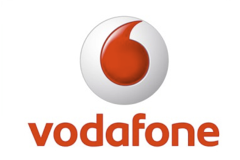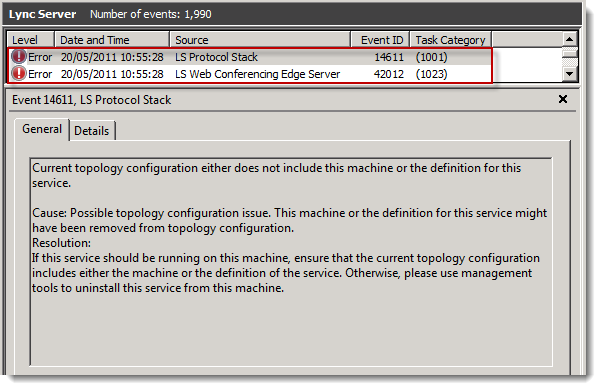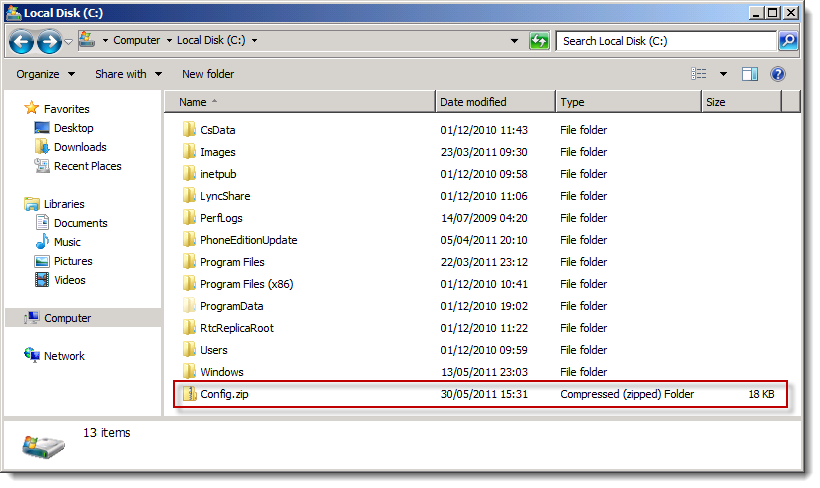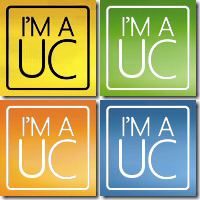Earlier today SteveB announced the release of Office 365, the next iteration of Microsoft’s Business Productivity Online Services or BPOS. As a side note Office 2010 SP1 was also released to the web and can be downloaded here for x86 and here for x64.
As a part of the Office 365 offering comes Lync Online, a hosted version of Lync Server 2010. In actual fact you can even get an on-premises Lync Plus CAL (this includes Enterprise Voice) should you opt for the Office 365 E4 Plan.
So what are the differences between the two on-premises and hosted or live editions of Lync? I found a great feature comparison matrix in the Lync Online for Enterprises Service Description, it even illustrates the difference between Lync Online and Office Communications Online.
Updated table now available here
| Features | Lync Server 2010 | Office Communications Online | Lync Online |
| IM/Presence and Lync-to-Lync Calls | |||
| 1-to-1 and multiparty IM/presence | Yes | Yes | Yes |
| Address book search | Yes | Yes | Yes |
| DL expansion (DLX) | Yes | Yes | Yes |
| File transfers | Yes | Yes (inside firewall only) | Yes |
| Lync-to-Lync audio/video calls | Yes | Yes (inside firewall only) | Yes |
| Lync-to-Lync high definition video | Yes | No | No |
| Presence and click-to-Lync from Office Apps | Yes | Yes | Yes |
| Interactive contact card in Office 2010 | Yes | No | Yes |
| Lync Skill Search in SharePoint Server (on-premises) | Yes | No | No |
| Lync Skill Search in SharePoint Online | No | No | No |
| Persistent Group Chat | Yes | No | No |
| Privacy mode | Yes | No | No |
| Lync external connectivity (federation and Public IM connectivity) | |||
| IM/presence/audio/video federation with other OCS/Lync Server /Lync Online organizations | Yes | No | Yes |
| IM/presence/audio/video with Windows Live Messenger | Yes | No | Yes |
| IBM Sametime federation | Yes | No | No |
| IM/P federation with XMPP networks (Jabber, Google Talk) | Yes | No | No |
| IM/presence with AOL, Yahoo | Yes | No | No |
| Meetings (audio/video/web conferencing) | |||
| Meeting attendee capacity | 250 | No | 250 |
| Desktop sharing | Yes | No | Yes |
| Application sharing | Yes | No | Yes |
| White boarding and annotations | Yes | No | Yes |
| PowerPoint upload for online presentations | Yes | No | Yes |
| Upload for other file types | No | No | No |
| Multimedia Content Upload | No | No | No |
| Polling | Yes | No | Yes |
| Ad-hoc multiparty PC-based audio/video | Yes | No | Yes |
| Authenticated attendee in Lync Web App | Yes | No | No |
| Unauthenticated attendee in Lync Web App | Yes | No | Yes |
| Lync attendee client | Yes | No | Yes |
| Scheduled conferences (using Outlook plug-in) | Yes | No | Yes |
| Outlook delegation for scheduling meetings | Yes | No | Yes |
| Support for RoundTable | Yes | No | Yes |
| Lobby | Yes | No | Yes |
| Interoperability with certified partners for dial-in audio conferencing (ACP) | No | No | Yes |
| Phone dial-out from scheduled meetings via third-party dial-in conferencing service | No | No | Yes |
| Client side recording and playback | Yes | No | No |
| Server-side recording and playback | No | No | No |
| Generate a link to a scheduled meeting via web page | No | No | No |
| Scheduling an online meeting in Outlook Web App | No | No | No |
| Native dial-in audio conferencing on Lync server | Yes | No | No |
| Screen Snapshot (Desktop Annotation) | No | No | No |
| Backstage/Content Preview for presenters | Yes | No | Yes |
| Mute all attendees | Yes | No | Yes |
| Mute individual attendees | Yes | No | Yes |
| Unmute all attendees | Yes | No | Yes |
| Unmute individual attendees | Yes | No | Yes |
| In-meeting attendee permission controls | Yes | No | Yes |
| Interoperability with on-premises video conferencing systems | Yes | No | No |
| Voice and telephony | |||
| Lync-to-phone (calls with landlines and mobile phones) | Yes | No | No |
| Call hold/retrieve | Yes | No | No |
| Dial-out from ad-hoc Lync meetings | Yes | No | No |
| Advanced call controls (transfer, forward, simul-ring) | Yes | No | No |
| Access to Exchange Online voicemail | Yes | No | No |
| Team call | Yes | No | No |
| Delegation (boss-admin) for Voice | Yes | No | No |
| Call park | Yes | No | No |
| Outgoing DID manipulation | Yes | No | No |
| E-911 | Yes | No | No |
| Dial plans and Policies | Yes | No | No |
| IP desk phone support | Yes | No | No |
| Resilient Branch Office Appliance | Yes | No | No |
| Call Admissions Control (CAC) | Yes | No | No |
| Support for analog devices (such as FAX) | Yes | No | No |
| Response groups | Yes | No | No |
| Private Line (secondary DID for executives) | Yes | No | No |
| Interoperability with third-party PBX or trunks | Yes | No | No |
| Presence interoperability with third-party PBX | No | No | No |
| RCC (click-to-call) with on-premises PBX | Yes | No | No |
| Malicious call trace | Yes | No | No |
| Unassigned Number | Yes | No | No |
| Network QoS – DSCP | Yes | No | No |
| Media path optimization | Yes | No | No |
| Phone number management | Yes | No | No |
| CDR and billing reporting | Yes | No | No |
| Integration with call center solutions (Aspect) | Yes | No | No |
| Client support | |||
| Lync 2010 | Yes | No | Yes |
| Lync Web App for participating in scheduled meetings | Yes | No | Yes |
| Lync 2010 Attendee client (joining meetings) | Yes | No | Yes |
| Communicator for Mac client | Yes | No | No |
| Office Communicator Web Access (2007 R2) client | Yes | No | No |
| Office Communicator 2007 R2 client | Yes | Yes | No |
| Lync 2010 Phone Edition (Lync-based IP phones) | Yes | No | No |
| Lync 2010 Attendant client (receptionist rich client) | Yes | No | No |
| Communicator Mobile (Windows Phones 6.x) | Yes | No | No |
| Lync 2010 Mobile client | No (coming soon) | No | No (coming soon) |
| IM and media encryption | Yes | Yes | Yes |
| IM filtering | Yes | Yes | Yes |
| Anti-malware scanning for meeting content and file transfers | Yes (partner solutions) | No | No |
| IM archiving (server side) | Yes | No | No |
| Exchange/SharePoint interoperability | |||
| Presence interoperability with Exchange and SharePoint on-premises | Yes | Yes | Yes |
| Presence interoperability with Exchange Online and SharePoint Online | Yes | Yes | Yes |
| Unified Messaging interoperability with Exchange Online | Yes | No | No |
| Unified Messaging interoperability with Exchange on-premises | Yes | No | No |
| Lync Online and Lync on-premises, and administration | |||
| Server/cloud coexistence (split domain) on user basis (some users on-premises, some users online) | No | No | No |
| Splitting workloads (for example, IM/presence/voice on-premises, conferencing in the cloud) | No | No | No |
| PowerShell support | Yes | No | No |
| Bigfin (web) UI | Yes | No | No |
| Attendee/user reporting | No | No | No |
| Reporting (CDR, QoE) | Yes | No | No |
| Third-party API support | |||
| Client-side APIs | Yes | No | Yes |
| Server-side APIs | Yes | No | No |












